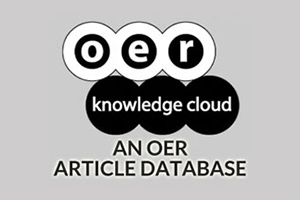Trends and Patterns in Massive Open Online Courses: Review and Content Analysis of Research on MOOCs (2008-2015)
DOI:
https://doi.org/10.19173/irrodl.v18i5.3080Keywords:
distance education, open and distance learning, Massive Open Online Courses, MOOCs, research trendsAbstract
To fully understand the phenomenon of massive open online courses (MOOCs), it is important to identify and map trends and patterns in research on MOOCs. This study does so by reviewing 362 empirical articles published in peer-reviewed journals from 2008 to 2015. For the purpose of this study, content analysis and discourse analysis were employed to analyze the articles. Accordingly, the trend line showing the number of articles per year indicates that the extent of research on MOOCs is likely to increase in the coming years. In terms of research areas, the findings reveal an imbalance and three research areas out of fifteen constitute more than half of all research on MOOCs. With regard to types of MOOCs, related literature is dominated by research on xMOOCs. The discourse in MOOC articles takes a mostly neutral standpoint, articles with a positive outlook outweigh those that are negative, and there is an increase in a more critical discourse. Theoretical or conceptual studies are preferred by researchers, although MOOC research generally does not benefit from being viewed through theoretical or conceptual lenses.
Published
How to Cite
Issue
Section
License
This work is licensed under a Creative Commons Attribution 4.0 International License. The copyright for all content published in IRRODL remains with the authors.
This copyright agreement and usage license ensure that the article is distributed as widely as possible and can be included in any scientific or scholarly archive.
You are free to
- Share — copy and redistribute the material in any medium or format
- Adapt — remix, transform, and build upon the material for any purpose, even commercially.
The licensor cannot revoke these freedoms as long as you follow the license terms below:
- Attribution — You must give appropriate credit, provide a link to the license, and indicate if changes were made. You may do so in any reasonable manner, but not in any way that suggests the licensor endorses you or your use.
- No additional restrictions — You may not apply legal terms or technological measures that legally restrict others from doing anything the license permits.







